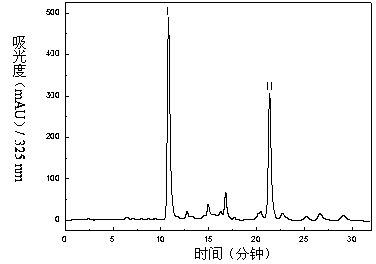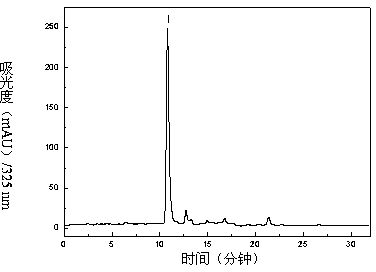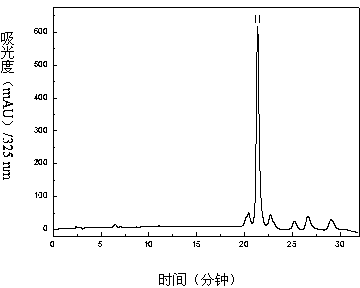Method for separating and purifying chlorogenic acid and 3,5-dicaffeoylquinic acid from honeysuckle flower
A technology for separation and purification of caffeoylquinic acid, which is applied in the chemical industry, can solve the problems of few research reports on 3,5-dicaffeoylquinic acid, and achieve the effects of short process cycle, high purity and simple operation
- Summary
- Abstract
- Description
- Claims
- Application Information
AI Technical Summary
Problems solved by technology
Method used
Image
Examples
Embodiment
[0032] Example: The method for separating and purifying chlorogenic acid and 3,5-dicaffeoylquinic acid from honeysuckle, the steps are:
[0033] (1) Preparation of the crude extract of honeysuckle: Take the crushed honeysuckle, heat and reflux extraction with 70% ethanol (adjust the pH to about 4 with hydrochloric acid), filter, and concentrate the ethanol extract under reduced pressure to obtain the crude extract.
[0034] (2) Extraction: Dissolve the above crude extract in hot water at about 70°C, add hydrochloric acid to adjust the pH to about 2, then extract with ethyl acetate, and the ethyl acetate extract is concentrated under reduced pressure to obtain total phenols of honeysuckle acid extract.
[0035] (3) Separation and purification of macroporous adsorption resin: Put the total phenolic acid extract of honeysuckle on a macroporous adsorption resin column, first elute with water, and then use 20%, 40%, 60%, 80%, 95% ethanol-water solution for Gradient elution in th...
PUM
 Login to View More
Login to View More Abstract
Description
Claims
Application Information
 Login to View More
Login to View More - R&D
- Intellectual Property
- Life Sciences
- Materials
- Tech Scout
- Unparalleled Data Quality
- Higher Quality Content
- 60% Fewer Hallucinations
Browse by: Latest US Patents, China's latest patents, Technical Efficacy Thesaurus, Application Domain, Technology Topic, Popular Technical Reports.
© 2025 PatSnap. All rights reserved.Legal|Privacy policy|Modern Slavery Act Transparency Statement|Sitemap|About US| Contact US: help@patsnap.com



